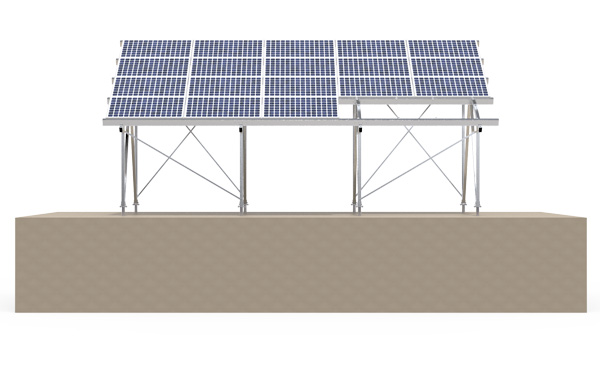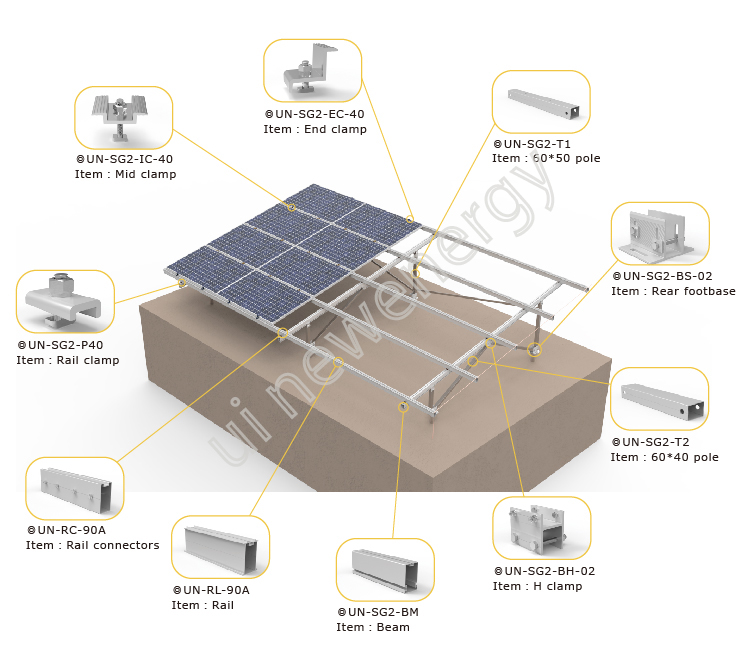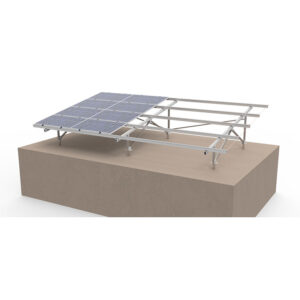
Solar Mounting System Ground Mounting Bracket Carbon Steel Structure For Solar Panel Support Ground screw
High-Strength Carbon Steel: Provides a <span

A Solar Ground Mounting System is a structure designed to support solar panels on the ground rather than on a roof. These systems are ideal for large-scale solar installations or when roof space is not available or suitable for mounting solar panels. The system typically includes metal frames, posts, or beams that anchor the solar panels securely to the ground. The design of the mounting system allows for optimal positioning and tilt angles to capture the maximum amount of sunlight. It also ensures stability and durability against harsh weather conditions. Solar ground mounting systems can be adjustable or fixed, depending on the requirements of the installation.




High-Strength Carbon Steel: Provides a <span

High-Quality Q235 Steel: Strong, durable <span




A solar ground mounting system is a structure used to install solar panels on the ground instead of on a roof. It secures the panels to the ground using poles or racks, and is ideal for properties without suitable roof space or when a roof-mounted system is not practical.
A solar ground mounting system anchors solar panels on the ground using vertical posts or frames. These structures can be adjusted to different angles to maximize solar exposure throughout the year.
The cost can vary based on the size of the system and site conditions, but typically, a ground-mounted solar system is more expensive than roof mounting because it requires additional land preparation, mounting structures, and sometimes more complex installations.
Yes, if you have enough space on your property and the land is suitable (i.e., not too sloped or rocky), you can install a solar ground mounting system. It’s important to consult with a professional installer to determine the best location for the system.
A well-installed solar ground mounting system can last 20-30 years, similar to roof-mounted systems. However, the longevity depends on the materials used for the mounts and the maintenance provided.
Most ground mounting systems are made of galvanized steel, aluminum, or other corrosion-resistant materials. These materials are chosen for their strength and durability in outdoor conditions.
Yes, generally speaking, ground-mounted systems can be more expensive due to the cost of land preparation, additional mounting materials, and labor required for installation.
Yes, solar ground mounting systems are designed to endure extreme weather conditions, including high winds, snow, and rain. However, the design and installation should be tailored to the specific weather conditions in your region.
The amount of space depends on the size of your solar panel system. Typically, each panel requires about 15 to 20 square feet, so for a typical 5 kW system, you’d need around 250 to 300 square feet of clear ground space.
Yes, most locations require building permits for solar ground mounts. It’s important to check with local authorities or your installer to ensure compliance with zoning laws, building codes, and any other regulations.
While it is possible to relocate a solar ground mounting system, it can be expensive and labor-intensive. Therefore, it’s best to choose a permanent location carefully.
Solar ground mounting systems can be more efficient in some cases because they allow for better positioning and airflow beneath the panels, but this depends on factors like location, tilt angle, and the amount of sunlight the area receives.
Flat or gently sloping land is ideal for solar ground mounting. Avoid rocky or heavily wooded areas as they can complicate installation and reduce efficiency.
Yes, due to the complexity of installation, it’s recommended to hire a professional installer. Proper design, land preparation, and mounting are critical for ensuring the system is safe, secure, and efficient.